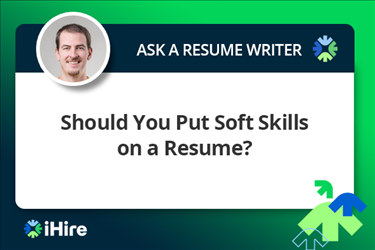- Job Seeker Resources
- |
- Last Updated: February 08, 2023

An Introduction to Applicant Tracking Systems
At some point in their job search, nearly everyone experiences the “black hole” situation: they’ve submitted their resume for a position that seems like it was tailored for their skills and experience and yet they never hear anything back. Welcome to the world of applicant tracking systems (ATSs). These resume scanners were designed to make the hiring process smoother for employers and HR staff by filtering out approximately 75% of the resumes submitted for an open position.
Why Do Companies Use Applicant Tracking Systems?
This technology helps job seekers too, even though it may not seem like it when their resume falls into the “black hole.” In many ways, the advent of applicant tracking software has simplified the application process and, as long as the job seeker is aware of their existence and the pitfalls to avoid when dealing with ATSs, they can apply with more confidence knowing their resume was designed to get past these resume-reviewing robots.
98% or more of Fortune 500 companies currently use ATS resources, and 75% of recruiters use some form of applicant tracking software. The reason for this is quite simple: too many people are applying for open positions and a good portion of those folks do not meet the qualifications set out in the job posting. To combat this, businesses are using ATSs to screen resumes so that their HR personnel do not have to review hundreds if not thousands of resumes to fill a single opening. Using an ATS makes the hiring process more efficient, and when the average cost to hire a new employee is more than $3K, companies are ok with missing a few potential candidates that may be filtered out by an ATS if it means less time spent reviewing resumes from unqualified applicants.
Video: How to Beat Applicant Tracking Systems with iScore
How Does Applicant Tracking Software Work?
The way an ATS works is by scanning resumes for a set of resume keywords provided by HR staff. It functions as an initial screening tool, analyzing titles, dates, and descriptions to determine if a resume matches the employer’s requirements. If it does, then the document will be reviewed by a human being who will decide whether or not to call the applicant in for an interview. If it does not pass the ATS scan, the resume will fall into the “black hole” never to be seen again.
How to Beat the ATS
In order to maximize their chances of making it past ATSs, you need to customize your resume for each job. To do this, there are a few steps that job seekers should take and a few mistakes that must be avoided. Best practices for creating an ATS-friendly resume include using resume keywords from the job description within the document, locating name and contact information at the top of the first page, including a summary paragraph as well as a list of skills/qualifications, using standard fonts such as Arial, Tahoma, and Verdana, and incorporating simple, straightforward formatting. Making the resume too complicated or fancy is the easiest way to run into trouble with ATSs, so be sure to avoid using text boxes, graphics/logos, and headers/footers (although it is acceptable to use a header for listing contact information on the second page of a resume).
We'll Help You Get Past the ATS
Sign In to Access Our Resume Tools

Job Seeker Sign In
Also, steer clear of using abbreviations like mgr. for manager or dir. for director. Finally, it’s important to keep in mind that not all ATSs can read PDFs, so if it seems that the company may be using an ATS, be sure to send the resume as a Microsoft Word .doc or .docx file just to be on the safe side.
Although it may seem unfair to think that a soulless piece of technology is most often the initial gatekeeper in the hiring process, don’t be afraid. Rather than gnashing teeth and raging against the lack of humanity in business today, a job seeker should adjust their strategy and adopt the best practices in resume writing to maximize their chances of obtaining their next opportunity.
With so many individuals applying for open positions with dubious qualifications, resume scanner technology isn’t going away anytime soon. Take advantage of the situation and learn to make the robots work for you.
For more resume tips and tricks, visit our job seeker Resource Center, or reach out to one of our resume experts for extra help creating a stand-out resume.

August 23, 2022
Sign In or Register to access all articles and insider tips for help in your job search.
Search for iHire Jobs
RELATED JOBS
RELATED RESOURCES
Find the Right Job Faster
- Get personalized job matches sent to your inbox every day
- Connect directly with employers before your competition
- Advance your career with expert advice on interviewing, salary negotiation, and more
We value your privacy




